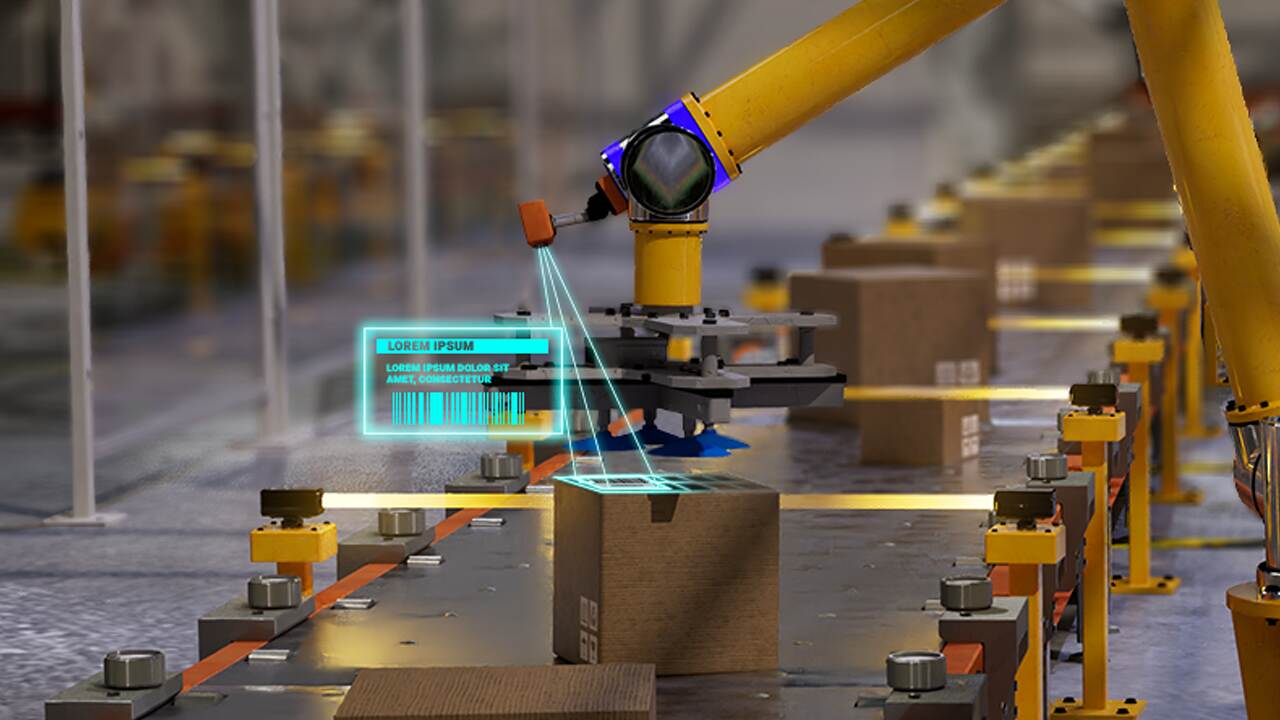SSZTD34 March 2024 AM68A , AM69A , TDA4VH-Q1 , TDA4VM
Industrial robotics has undergone a remarkable evolution in recent years, driven by advancements in semiconductor technology and the increasing demand for smarter, safer, and more efficient systems. At the heart of this transformation lies the use of highly advanced embedded processors that use a systems-on-chip (SoC) architecture which integrates a variety of components including peripherals and hardware accelerators. These processors play a crucial role in enhancing the capabilities of industrial robots, enabling them to perform tasks with precision, speed, and reliability. In this article, we will delve into the role of highly integrated embedded processors in advancing industrial robotics.
Introduction to industrial robotics and embedded processors
Industrial robotics refers to the use of automated machines like articulated robot arms (Figure 1) to perform various tasks in industrial settings. Tasks for these robots range from simple assembly operations to complex manufacturing processes such as welding, painting, and material handling.
 Figure 1 Automated articulated robot
arm with UPC scanner
Figure 1 Automated articulated robot
arm with UPC scannerEmbedded processors are used to control the movement of robotic arms and actuators, process data from various sensors, and make real-time decisions based on environmental feedback. They enable robots to perform tasks with greater precision, efficiency, and autonomy, thereby increasing productivity and reducing the need for human intervention in industrial processes.
The importance of highly integrated embedded processors in industrial robots
Highly integrated embedded processors, like TI’s AM68A, AM69A, TDA4VM and TDA4VH-Q1, typically combine a variety of components, including central processing units (CPUs), on-chip memory, input/output (I/O) interfaces, specialized hardware accelerators, and vision processors into a single chip. These devices are designed to handle a wide range of tasks, including motion control, sensor data processing, communication, and real-time decision making.
Higher levels of integration allow embedded processors to be more energy efficient and dissipate less heat when compared to discrete approaches, which is a critical factor in industrial applications. Lower power consumption in the computing block of the robot means that power can be allocated to other operation-critical systems or overall power use can be reduced entirely, making the robot more energy efficient. Additionally, embedded processors with advanced power management capabilities can help extend battery life in battery-powered robots.
Lastly, integration helps simplify overall system design, making it easier to fit into a robot along with other systems. This can improve performance by reducing data transfer times between components because they can be configured closer together within the robot– reducing the amount of cabling needed, thus lowering system cost and weight.
How TI’s embedded processors are shaping the future of robotics?
TI is a leading provider of highly integrated embedded processors for industrial robotics applications. Our portfolio offers a wide range of embedded processors specifically designed to meet the demanding requirements of industrial automation. Our processors are designed to meet our customer's performance, power consumption, and security needs for systems in a variety of industrial settings.
When combined with open-source software (available on the TI Developer Zone) and an extensive ecosystem of hardware and software third-party partners, these devices are helping drive innovation and accelerate the adoption of robotics in industrial settings by simplifying the design process.
What’s next?
The use of highly integrated embedded processors in industrial robots is expected to continue to grow as robots become increasingly more intelligent, autonomous, and able to more reliably collaborate with human operators. Future developments in this field are likely to focus on further improving the performance, power efficiency, and security of embedded processors, as well as integrating new technologies such as artificial intelligence and machine learning into more robotic control systems.
With continued innovation and advancement, highly integrated embedded processors will play an essential role in shaping the future of industrial robotics.